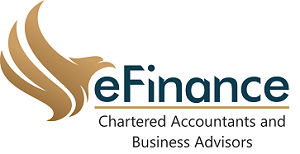Upon entering a credit union, the unique atmosphere is immediately apparent. It could be the tellers who greet regulars by name or the loan officers who take the time to elaborate on choices. There’s a reason for this difference; the people banking here actually own the place. This isn’t marketing talk. Credit union members really do own their financial institution together. Banks work differently. They make money for shareholders who might live thousands of miles away and never use the bank’s services. Credit unions flip this model on its head, and that flip changes pretty much everything about how they operate.
How Member Ownership Changes the Game
Join a credit union and you get something surprising: a vote. Not ten votes if you’re rich or half a vote if you’re broke. One vote. Same as everybody else. The retired teacher with her life savings there? One vote. The kid fresh out of high school with his first checking account? Also one vote.
What happens when a financial institution doesn’t need to squeeze out profits for Wall Street? Good things, mostly. Interest rates on savings accounts tend to run higher. Loan rates often come in lower. Fees? They’re usually fewer and smaller. It makes sense when you think about it. Without outside investors demanding returns, any extra money flows back to the members who generated it in the first place.
People notice the difference. Year after year, credit unions crush banks in satisfaction surveys. Turns out people appreciate doing business with a place that puts them first instead of treating them like walking ATM machines.
Community Connection Runs Deep
Credit unions started small. Groups of factory workers, farmers, or teachers would pool their money to help each other out when banks wouldn’t give them the time of day. That DIY spirit stuck around even as credit unions grew bigger and fancier. Drive through any town with a credit union and you’ll see their fingerprints everywhere. Baseball uniforms with the credit union logo. Scholarship announcements in the local paper. This isn’t just corporate PR. Local boards manage local finances.
Personal Service in a Digital Age
Sure, you can deposit checks with your phone now. Credit unions like US Eagle FCU get that people want convenience. They’ve built slick apps and joined ATM networks so members can grab cash anywhere. But they kept the human touch alive. Need to figure out mortgage options for that fixer-upper you’ve got your eye on? You won’t get shuffled through a call center maze. You’ll talk to someone who can actually make decisions, maybe even someone you’ve chatted with before. Lost your job and falling behind on payments? Credit union staff have room to get creative with solutions. They might freeze interest, skip a few payments, or restructure the whole loan. Try getting that kind of flexibility from a mega-bank following a corporate playbook.
Conclusion
Here’s what it boils down to: credit unions exist to help their members, period. No divided loyalties, no concerns about quarterly financial statements, and no stress to achieve unrealistic growth goals. It’s just people working together, sharing what they have to help one another succeed financially.
This setup creates a positive feedback loop. Happy members tell friends and family. More people join. The credit union gets stronger and can offer even better rates and services. Current members benefit from the growth they helped create. Everyone moves forward together. Your money needs to live somewhere. You could park it with a bank focused on maximizing shareholder returns. Or you could join a credit union where your success is their success. For a growing number of Americans, that choice gets easier every year.






